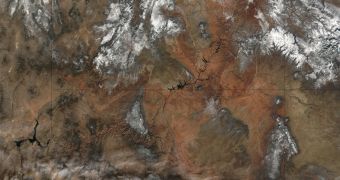Researchers at the University of New Mexico, in Albuquerque, have determined in a new study that the Grand Canyon did not form in its entirety 70 million years ago. The results of a new investigation show that the last stages of integration between all of its segments have occurred just 5-6 million years ago.
The Grand Canyon is arguably the most iconic landscape in the entire United States, so many scientists have been trying to determine its correct age for a long time. However, the issue has been marred with controversy, and a consensus has yet to be reached, Nature News reports.
The new investigation could potentially contribute to solving this issue, by proposing a new approach to studying this geological formation. Instead of calculating the age of its oldest feature, the UNM team decided to check the ages of individual features making up the canyon. They were able to determine that the newest ones were less than 6 million years old.
The team argues that a large number of very old, short canyons were linked together at that time, giving birth to the massive chasm we see today. This investigation comes on the heels of numerous researches that led to dissensions in the international scientific community.
“I think we’ve resolved the 140-year-long debate about the age of the Grand Canyon,” explains UNM geologist Karl Karlstrom, the leader of the research team. Details of the work appear in a paper published in the January 26 issue of the top scientific journal Nature Geoscience.
While the fact that the multi-colored rock layers in the canyon date back to as much as 1.8 billion years ago is well known, what is a little less known is the exact time when the Colorado River began cutting through these rock layers to form the canyons.
“Different segments of the canyon have different histories and different ages, but they didn’t get linked together to form the Grand Canyon with the Colorado River running through it until 5 to 6 million years ago,” Karlstrom explains.
The reason why these results are so different from those of previous studies is that the UNM team used a range of temperatures in their models, as opposed to a single fixed temperature. The group says that temperature variations most likely occurred over the past 70 million years, altering erosion rates.

 14 DAY TRIAL //
14 DAY TRIAL //